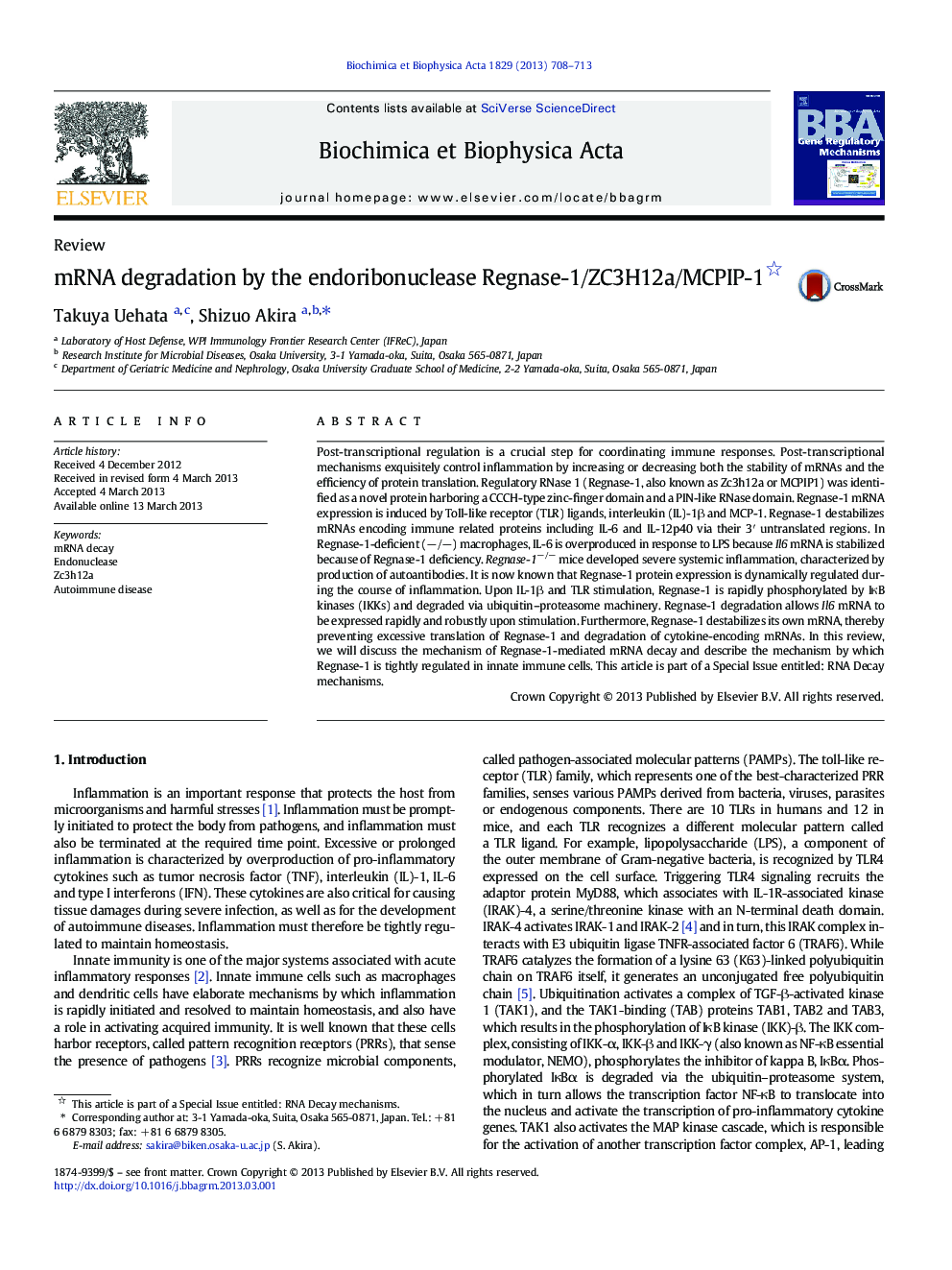| Article ID | Journal | Published Year | Pages | File Type |
|---|---|---|---|---|
| 8300559 | Biochimica et Biophysica Acta (BBA) - Gene Regulatory Mechanisms | 2013 | 6 Pages |
Abstract
Post-transcriptional regulation is a crucial step for coordinating immune responses. Post-transcriptional mechanisms exquisitely control inflammation by increasing or decreasing both the stability of mRNAs and the efficiency of protein translation. Regulatory RNase 1 (Regnase-1, also known as Zc3h12a or MCPIP1) was identified as a novel protein harboring a CCCH-type zinc-finger domain and a PIN-like RNase domain. Regnase-1 mRNA expression is induced by Toll-like receptor (TLR) ligands, interleukin (IL)-1β and MCP-1. Regnase-1 destabilizes mRNAs encoding immune related proteins including IL-6 and IL-12p40 via their 3â² untranslated regions. In Regnase-1-deficient (â/â) macrophages, IL-6 is overproduced in response to LPS because Il6 mRNA is stabilized because of Regnase-1 deficiency. Regnase-1â/â mice developed severe systemic inflammation, characterized by production of autoantibodies. It is now known that Regnase-1 protein expression is dynamically regulated during the course of inflammation. Upon IL-1β and TLR stimulation, Regnase-1 is rapidly phosphorylated by IκB kinases (IKKs) and degraded via ubiquitin-proteasome machinery. Regnase-1 degradation allows Il6 mRNA to be expressed rapidly and robustly upon stimulation. Furthermore, Regnase-1 destabilizes its own mRNA, thereby preventing excessive translation of Regnase-1 and degradation of cytokine-encoding mRNAs. In this review, we will discuss the mechanism of Regnase-1-mediated mRNA decay and describe the mechanism by which Regnase-1 is tightly regulated in innate immune cells. This article is part of a Special Issue entitled: RNA Decay mechanisms.
Related Topics
Life Sciences
Biochemistry, Genetics and Molecular Biology
Biochemistry
Authors
Takuya Uehata, Shizuo Akira,
